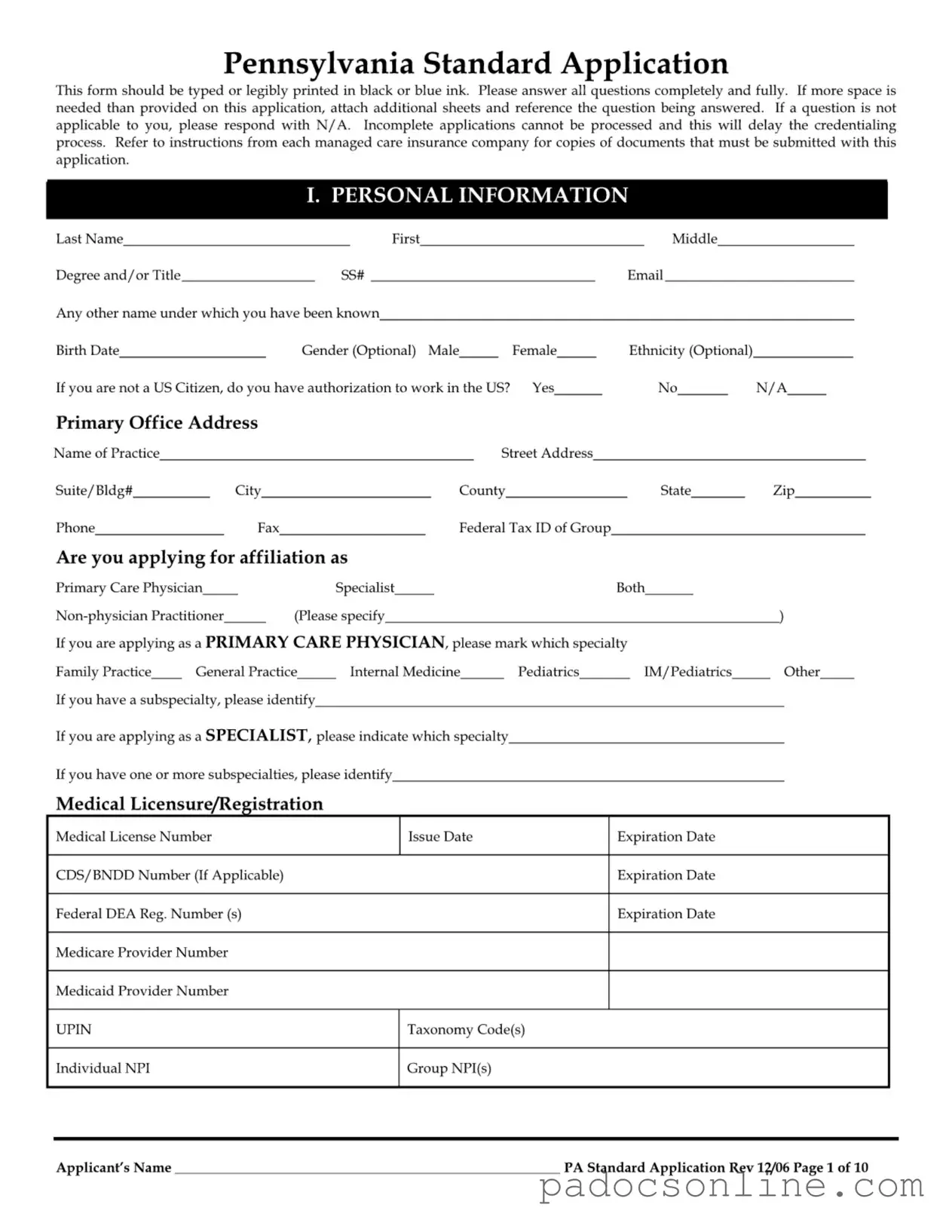Completing the Pennsylvania Standard Application form can be a straightforward process, but many applicants make common mistakes that can lead to delays or complications. One frequent error is failing to answer all questions completely. Every section of the application is important, and leaving any part blank can result in an incomplete submission. If a question does not apply, it is essential to write "N/A" instead of skipping it altogether.
Another common mistake involves using the wrong ink color. The instructions specify that the form should be filled out in black or blue ink. Using any other color can cause issues with readability and may lead to the application being rejected. Additionally, applicants sometimes neglect to type or print their answers legibly, which can create confusion for those reviewing the application.
Many applicants also fail to attach necessary documents. The application requires specific documents to be submitted alongside it. Ignoring this requirement can delay the credentialing process significantly. Always refer to the instructions provided by the managed care insurance company to ensure all necessary documents are included.
Another mistake is inaccurate information. Providing incorrect details, such as an inaccurate Social Security number or misspelled names, can lead to serious complications. It is crucial to double-check all personal information before submitting the application.
Some applicants forget to explain gaps in their work history. If there are periods of unemployment or other gaps, these should be addressed in the application. Failing to do so can raise red flags for reviewers and may lead to questions about the applicant's qualifications.
In the education section, applicants sometimes omit important dates. It is necessary to include both the date of entry and graduation for each institution attended. Missing this information can leave reviewers with an incomplete picture of the applicant's educational background.
Another frequent oversight is not specifying specialties when applying as a primary care physician or specialist. If the application asks for specific specialties, applicants should provide this information clearly. Failing to do so can result in confusion about the applicant's qualifications.
Some applicants also neglect to indicate their current hospital affiliations. This information is vital for understanding the applicant's practice environment and capabilities. Omitting this can lead to questions about their current practice arrangements.
Lastly, many applicants fail to review the entire application before submission. A thorough review can catch mistakes that may have been overlooked during the initial filling out of the form. Taking the time to carefully check for errors and omissions can save a lot of time and hassle in the long run.
